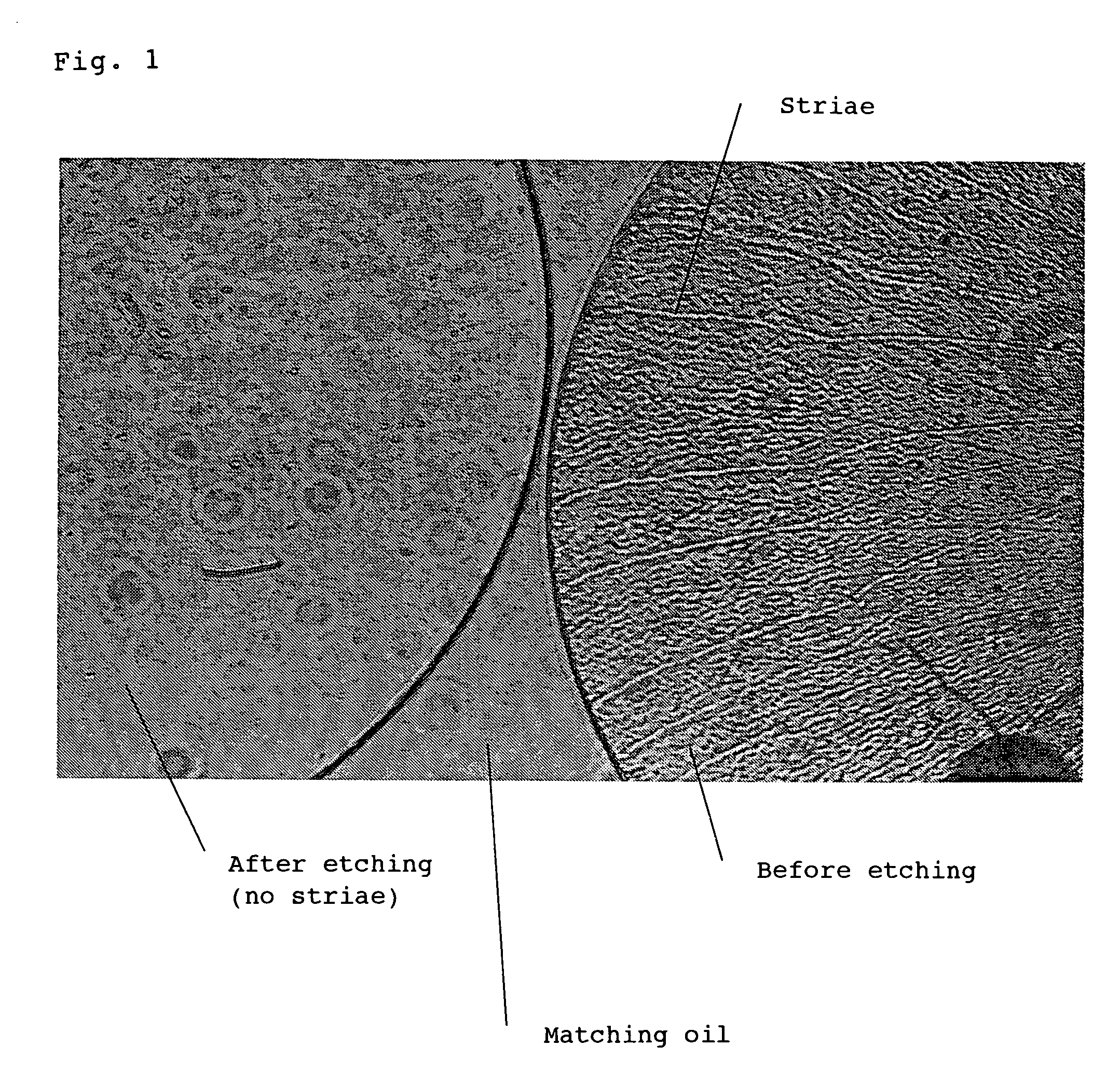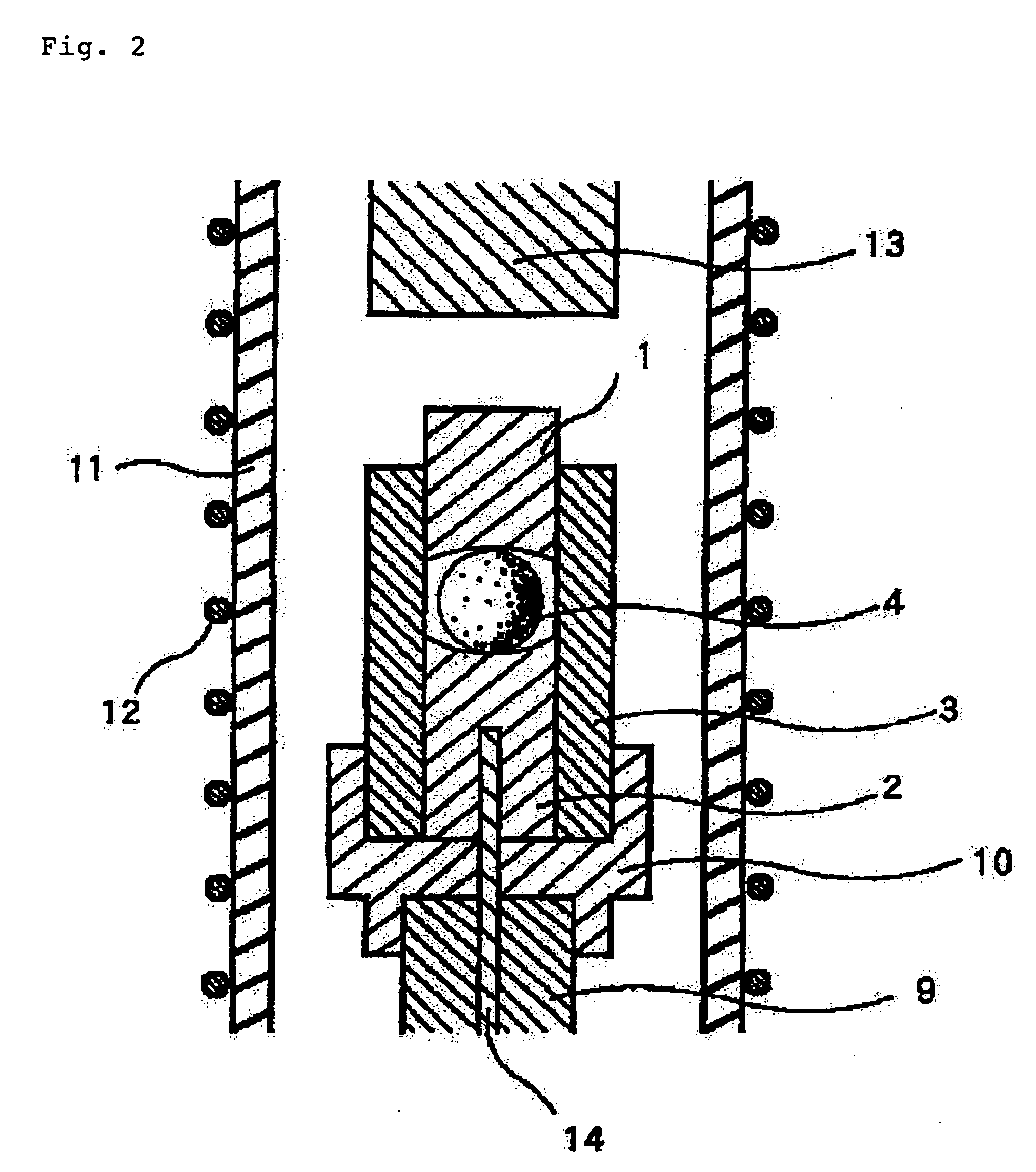Process for the production of precision press-molding preform and process for the production of optical element
a technology of precision press molding and optical element, which is applied in the direction of glass tempering apparatus, manufacturing tools, glass making apparatus, etc., can solve the problems of reducing the quality of press-molded products, requiring labor, time and cost, and reducing the production efficiency of press-molded products, so as to achieve high-quality preforms and high-quality preforms. , the effect of high production efficiency
- Summary
- Abstract
- Description
- Claims
- Application Information
AI Technical Summary
Benefits of technology
Problems solved by technology
Method used
Image
Examples
examples
[0243] (1) Preparation of optical glass containing P2O5, Nb2O5 and Li2O
[0244] Tables 1 to 5 show compositions of glass materials for producing preforms and properties of each of them such as a refractive index (nd), Abbe's number (vd), glass transition temperature (Tg), sag temperature (Ts) and liquidus temperature (L.T.). Samples for measurements with regard to the above properties were prepared as follows. Oxides, fluorides, hydroxides, carbonates and nitrates as materials corresponding to glass components were weighed so as to give a composition after formed into a glass and fully mixed. These materials were poured into a platinum crucible, and in an electric furnace, the materials in the platinum crucible were melted, refined and stirred at a temperature in the range of 1,50° C. to 1,200° C. to homogenize them. The thus-formed glass was cast into a mold preheated to a proper temperature, then, cooled to its glass transition temperature and, immediately thereafter, placed in an ...
PUM
| Property | Measurement | Unit |
|---|---|---|
| Fraction | aaaaa | aaaaa |
| Fraction | aaaaa | aaaaa |
| Thickness | aaaaa | aaaaa |
Abstract
Description
Claims
Application Information
 Login to View More
Login to View More - R&D
- Intellectual Property
- Life Sciences
- Materials
- Tech Scout
- Unparalleled Data Quality
- Higher Quality Content
- 60% Fewer Hallucinations
Browse by: Latest US Patents, China's latest patents, Technical Efficacy Thesaurus, Application Domain, Technology Topic, Popular Technical Reports.
© 2025 PatSnap. All rights reserved.Legal|Privacy policy|Modern Slavery Act Transparency Statement|Sitemap|About US| Contact US: help@patsnap.com


